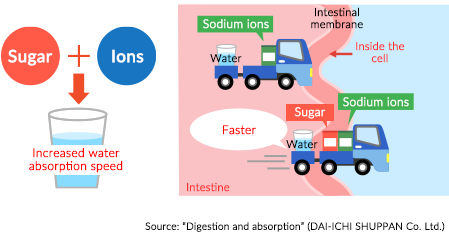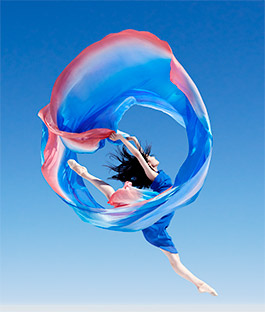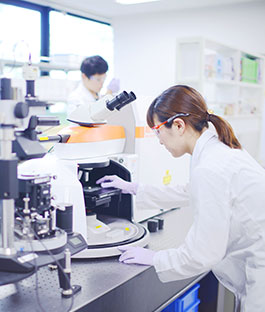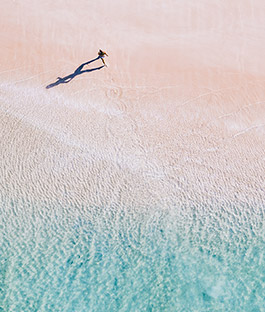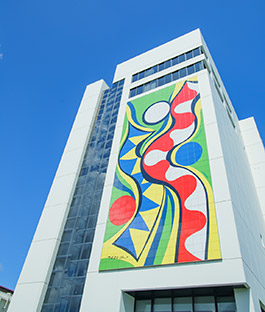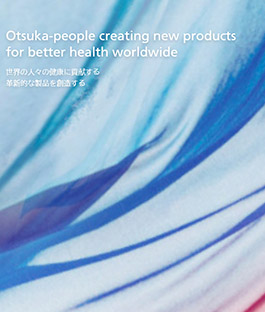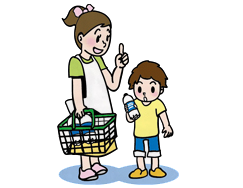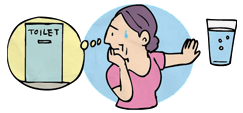The close connection between water, ions, and health
Why are ions important for the body? Find out more about effective rehydration to maintain and improve your health.
Learn how to stay healthy by rehydrating properly
How the body loses water
The body maintains the fluid balance with regulated levels of intake and output
Daily water intake and excretion
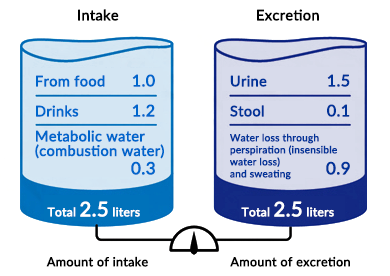
Under ordinary circumstances, our bodies lose about 2.5 liters of water a day through urination, and evaporation from our skin and through respiration. To counter this, we consume about 2.5 liters of water a day in the form of food and drink, thereby maintaining a balance of body fluid level.
When we perspire a lot, we get thirsty, and through drinking recover the body fluid lost through sweat.
Rehydration to maintain health
The water and electrolytes (ions) needed by the body can be supplied in two ways: orally, or by intravenous injection. Here we examine oral rehydration.
Thirst is a sign of dehydration
Thirst mechanism
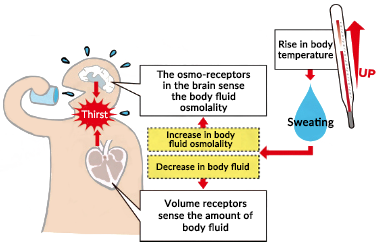
Why do we get thirsty? It is a signal that our body is dehydrated.
There are two types of thirst. The first occurs when the body has lost fluid due to sweating or other causes. The other type of thirst occurs when the concentration of body fluid (water and ions) is out of balance.
To prevent dehydration and related health problems, we start to feel thirsty, which prompts us to drink.
Form a habit of rehydrating
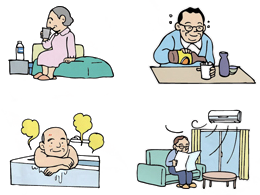
It is important to develop the habit to rehydrate before you actually feel thirsty. Before starting exercise or physical work, it is a good idea to drink one or two cups of water, followed by half to one cup of water during the activity, every 20 to 30 minutes. Ideally, you should replace at least 70% to 80% of the sweat loss. Be careful that you do not lose 2% or more of your body weight through dehydration. Also, consume half a cup of water regularly throughout the day (once an hour).
Related research findings:
Spontaneous dehydration
When it is hot, the body temperature is regulated though sweating. In order for this mechanism to function properly, the body needs to have enough fluid, and a proper balance of water and ions, meaning that it is important that the concentration of the body fluid always remains constant. When we sweat, we lose water and ions - mostly sodium and chloride (salt). If you drink just water to replenish lost fluid, the balance of water and ions in the body fluid breaks down, and the osmolality (level of electrolytes in the body fluid) gradually decreases. In order to halt this trend, your body automatically stops the feeling of thirst, and seeks to eliminate excess water as urine. As a result, the normal body fluid level is not sufficiently replenished. This phenomenon is called spontaneous dehydration.
Spontaneous dehydration
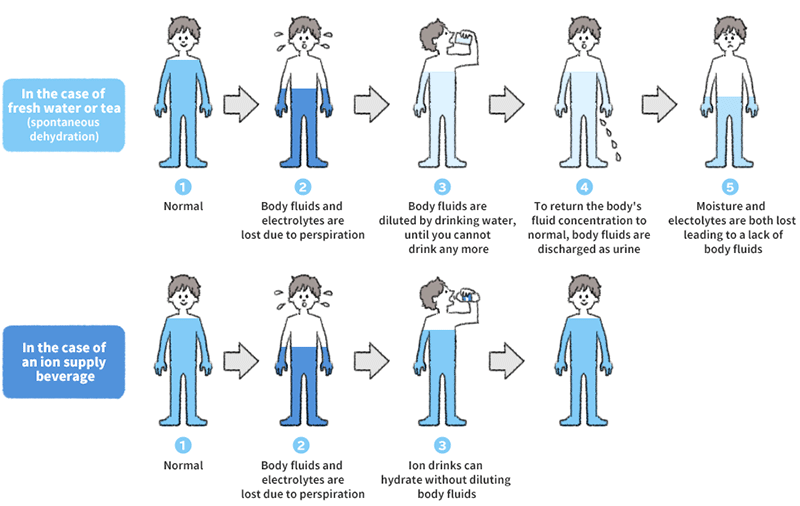
Choosing the right beverage
Choose a drink similar to body fluid
Ion content (positive ions) in sweat and ion supply drinks
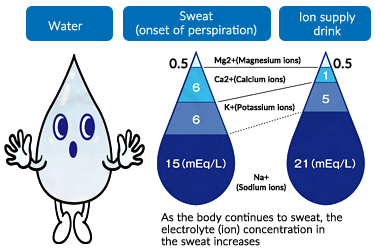
The reason that sweat tastes salty is that it contains not just water but also sodium and other ions. Therefore, it is best to drink something that can help your body quickly replenish both the water and sodium that it has lost through sweating; this is especially important if you are sweating a lot. You can rehydrate effectively by consuming an ion supply drink* or other beverage with properties that are close to those of body fluid.
- *An ion supply drink enables the body to easily replenish the water and electrolytes (sodium ions, etc.) lost while sweating.
Check whether your beverage contains sodium and carbohydrates
It is most effective to rehydrate with a drink that contains the right amount of salt (a concentration of 0.1% to 0.2%, or 40mg to 80mg per 100ml) and a suitable amount of sugar. The more intense your exercise, the more sugar content is needed to provide energy. Specifically, when exercising for an hour or more, it is effective to consume a drink with a 4% to 8% concentration of sugar. A beverage containing sugar is quickly absorbed in the intestines, and the water retention rate is high. A chilled ion supply drink is handy for this purpose. However, you can also dissolve half a teaspoon of salt (2g) in a liter of water, along with several sugar cubes, according to your taste.
Reference: "Guidebook for Prevention of Heat Strokes in Sports Activities" (Japan Sport Association)
Reference: On Preventing Heat Strokes in the Workplace (Ministry of Health, Labour and Welfare)
Reference: "Manual for Staying Healthy in Heat Stroke Environments "(Ministry of the Environment)
Check the nutritional components as shown on the label
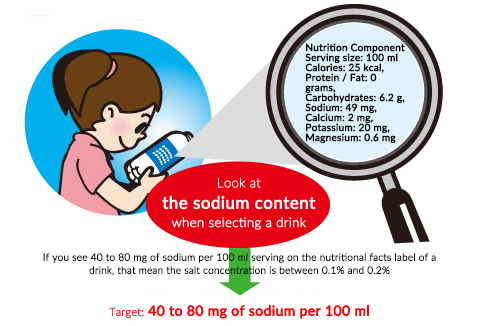
The function of carbohydrates
